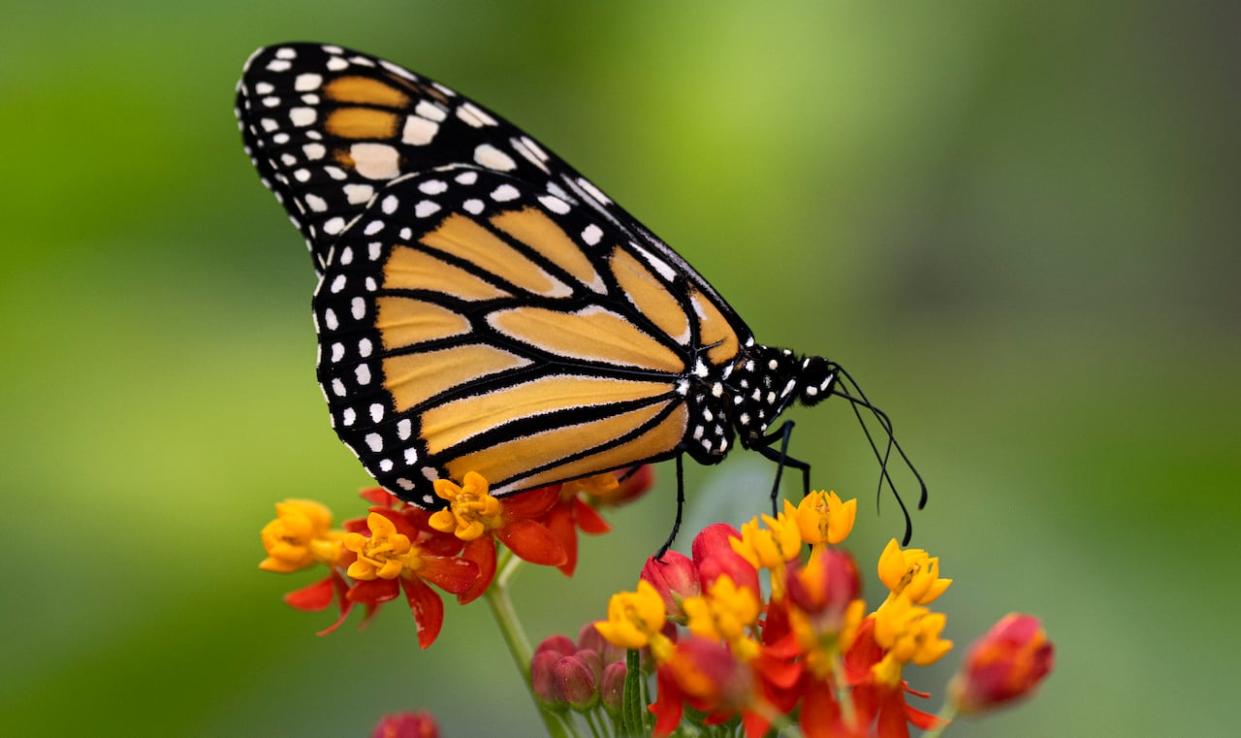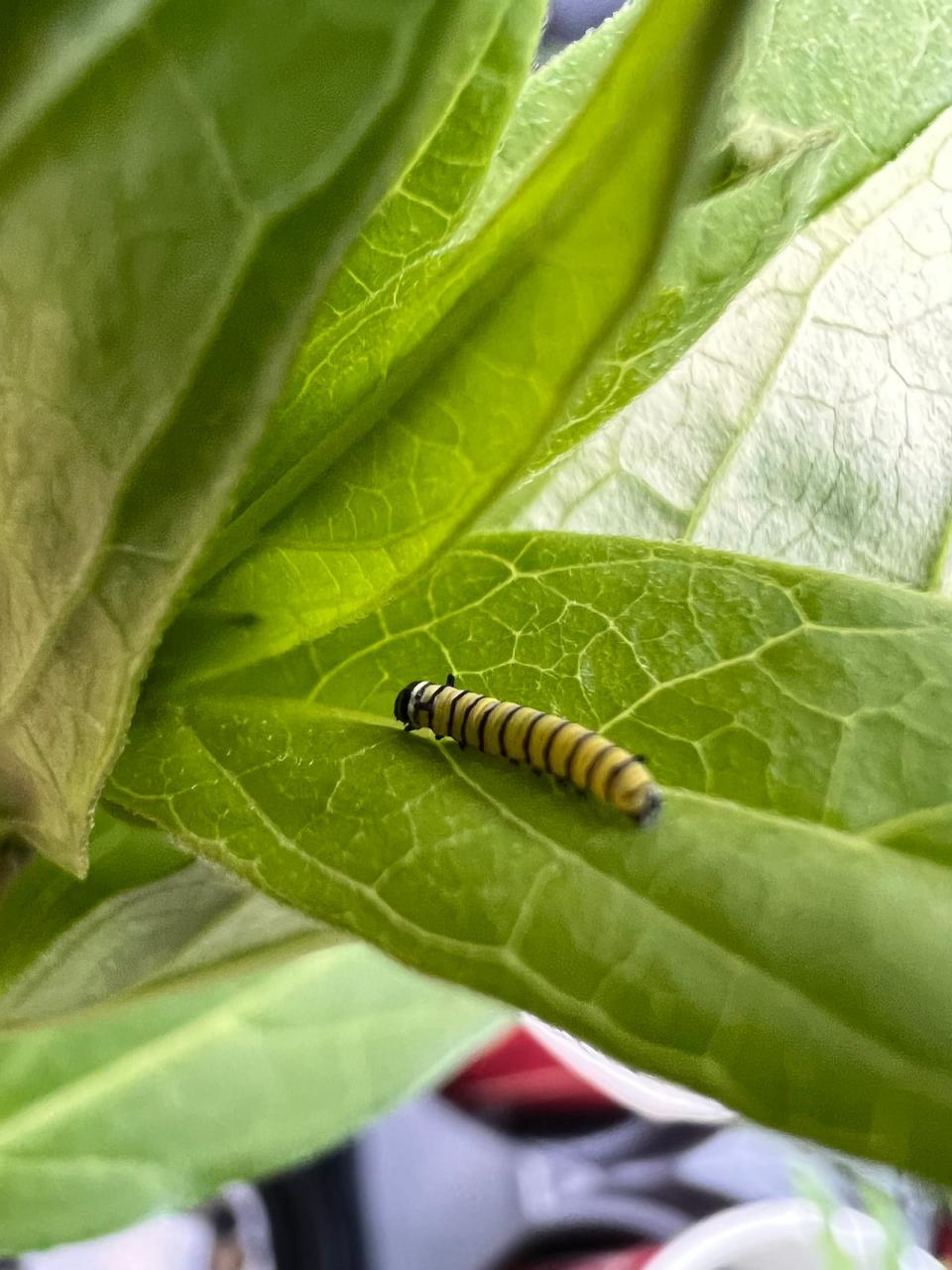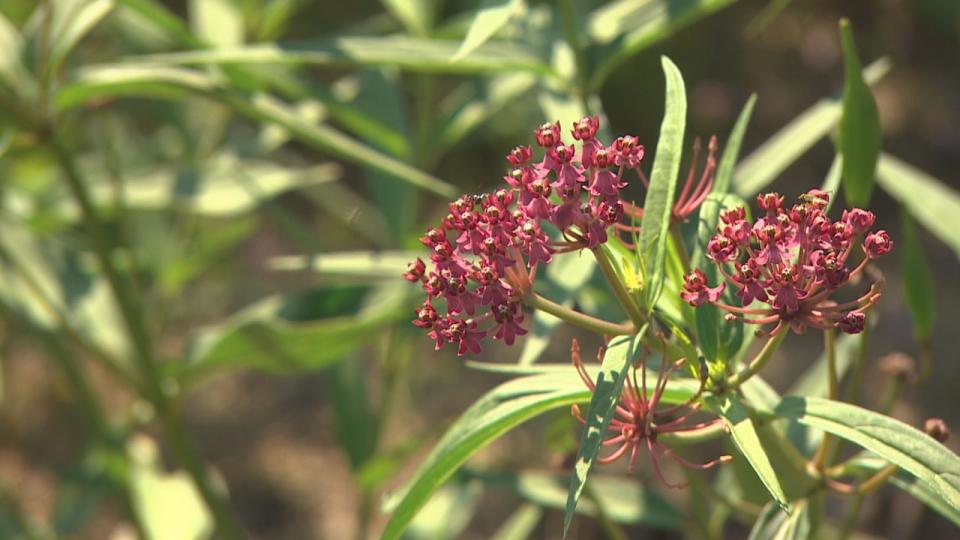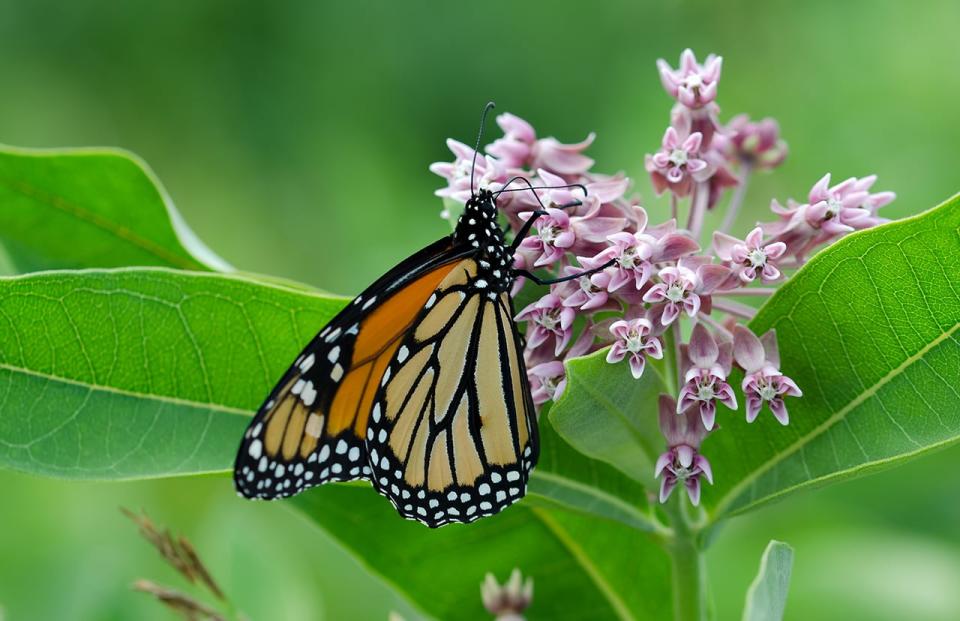Milkweed and monitoring: How to support monarch butterfly populations

Weeds can be annoying, but there is one weed that New Brunswickers might want to keep around this summer and even plant more of.
Milkweed. Two types of native milkweed — common and swamp — are found in New Brunswick and the plant is crucial to the survival of monarch butterflies.
"Monarchs aren't picky, like they will use milkweed in your garden, they'll use milkweed along major rivers and they'll use milkweed along roadsides," said John Klymko, a zoologist at the Atlantic Canada Conservation Data Centre in Sackville.
It's important that milkweed, the food supply for the caterpillars, is available in the Maritimes when the monarchs return, especially because of somewhat "worrisome" data out of Mexico that showed a 59 per cent decline in the population of Eastern monarchs overwintering there.

John Klymko, a zoologist with the Atlantic Canada Conservation Data Centre, said really low levels of overwintering monarchs is concerning. (Submitted by John Klymko)
This figure, released in February, shows how many hectares of forest are occupied by the overwintering monarchs. This year that number was 0.9 hectares (2.25 acres) compared to 2.21 hectares last year (5.5 acres).
Although the number only represents a year-to-year snapshot and annual fluctuations can be expected, this year's number is the second lowest ever reported.
Klymko said this monitoring started in the 1990s. There was a big dip in the 2010s, and then levels remained relatively static — although nowhere near the 1990s numbers — until the dip during this past winter.

A monarch caterpillar is pictured on a milkweed leaf. Milkweed is the exclusive food supply for monarch caterpillars. (Apryl Lark)
"When you see those really low levels, it is concerning because if it ever dips to zero, you know, that's probably game over for the Eastern migratory population," said Klymko.
Despite the concerning data gathered during the winter in Mexico, Klymko said monarchs do seem to have some resiliency in the Maritimes, holding the ability to rebuild some of its population over the summer months.
"There's actually more monarchs present in the summer than there ever was historically, based on what's been documented."

There are two native milkweed species in New Brunswick, one being swamp milkweed, pictured here. (Gary Solilak/CBC)
But he said the cause of decline for the overwintering population is likely a combination of factors, one being the loss of milkweed in the American Midwest where genetically modified crops have eradicated a lot of the milkweed.
Klymko said something also seems to be happening during the southward migration where some monarchs are not reaching Mexico. Klymko said this could be because habitats with lots of wildflowers — important for monarch butterflies moving south — are declining as more highly developed areas are popping up.

Common milkweed, pictured here, is the other native milkweed species in New Brunswick. (Credit: iStock/Getty Images)
Still, Klymko said there are ways that Maritimers can help the monarch butterfly population while they're here in the summer.
While planting milkweed is helpful, Klymko said monitoring monarch butterflies is also important.
He said one program, called Mission Monarch, allows people to sign up and then go and find a patch of milkweed and log how many monarch caterpillars are present. While other websites, like iNaturalist and eButterfly allow people to submit individual occurrences of monarch butterflies in their province.


